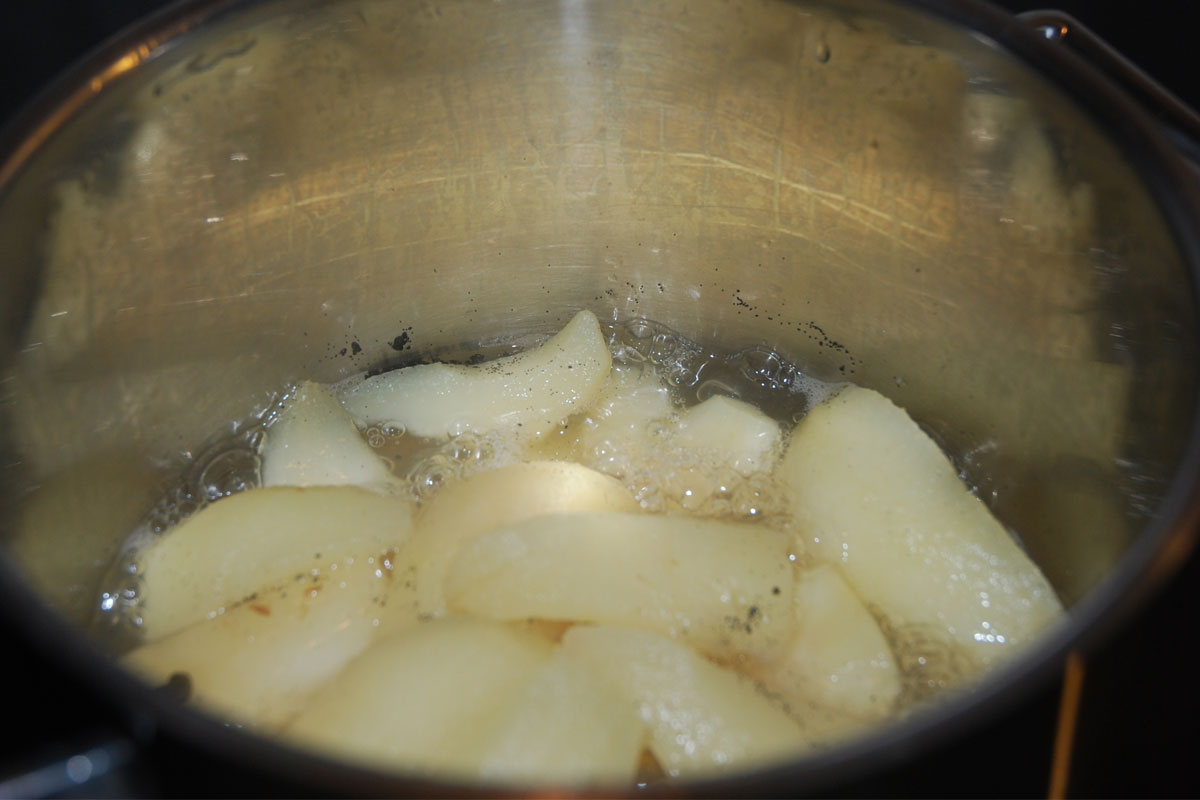Poaching
Poaching is the technique of cooking in a liquid, below the boiling point of the liquid. This technique ensures a much more juicy end result. Namely, for meats and fish, 100 C temperatures in aqueous solutions already dry out the surface. For better results a 122-185 F (50-85 C) liquid temperature renders the fish and meat much more juicy. When desired, brown the surface of the poached food by a post-surface treatment. For this purpose we use a flame or a short time in a frying pan or in a hot oven.
Sous-vide cooking
In the last 40-50 years so-called ‘sous-vide’ (under vacuum) cooking has been used. For meat the temperatures we control at 122-140 F (50-60 C) in combination with long cooking times. Best results we obtain by packing the food in plastic that can be vacuumed. Thus we cook the food under more pressure. This adds additional texture and flavor. Poaching is most suitable for delicate foods. Examples are fish, poultry and eggs, but beef tenderloin has been poached as well. Use a broth to poach when the food is in direct contact with the fluid or package the food in food grade plastic when poaching in water.
Examples of poaching
One of the famous traditional Cantonese dishes offered at Chinese New Year is Bok Chit Gai. Also called Bai Qie Ji in Mandarin. This translates directly as “white cut chicken”, a poached (whole) chicken. Often served with a cold ginger scallion sauce at the side. It is this dish that has made me convinced that properly poached meat preserves much of its juices. But it can still yield a somewhat textured skin, which is important to the Asians! The poaching of pears in a white wine in the presence of some sugar is another great example. The alcohol in the wine will ensure that the poaching temperature at simmering will remain far below 100 C.
The poaching of duck legs in low temperature duck fat (around 85 C) for prolonged times exemplifies the poaching in fat. It yields the famous duck confit. Here the collagen in the leg has been converted into delicious gelatine. The cooked leg can be stored for a long time as the fat seals off the meat from oxygen and bacteria.



